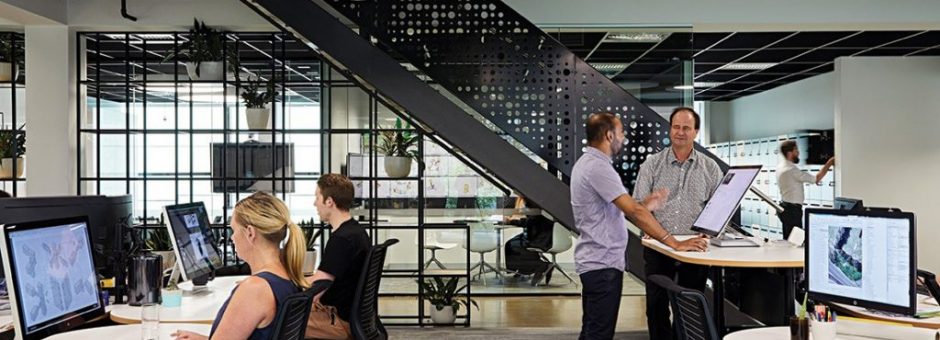When looking to boost productivity or gain a competitive advantage, businesses tend to place an emphasis on hiring practices. This makes sense, companies know full well that they are only as efficient as their staff. But once that talent is in place, how can their full potential be realized? Smart businesses will not overlook the impact that office layout has on productivity. Collaboration, concentration and well-being are all affected by the physical layout of the office itself. Some components of design are adjustable, while some require an architectural commitment that is not easily reversible. Therefore, careful consideration is required.
The Case for the Open Office
With the emergence of the idea economy came the theory that open space offices would create a climate of collaboration that would generate ideas, partnerships and synergies that may never blossom in the old system of prestigious corner offices and soul-sucking cubicles. As the thinking goes, valuable insights may come from anywhere, and in order to organically harvest these contributions, we should spend a large portion of our workday in each other’s midst.
Barrier-Free Backlash
No sooner had the business world jumped on the open space bandwagon than we started to experience the backlash. While the benefits to teamwork were real, so were the distractions. Turns out that the process of finalizing a report is not always enhanced by listening to your colleague book a dentist appointment. And those organic conversations that arise? They might consist of strategic brilliance, but all too often involve unsolicited weekend recaps or Monday morning quarterbacking. Something as simple as peripheral movement in the corner of one’s eye can break concentration. Open space offices have even been blamed for the spread of germs. In order to experience the best of both worlds, some balance is in order.
Today, there are really no rules, and the theories on workplace optimization are plentiful. Generally-speaking we look to create an office that includes both common space for conversation, and private space for concentration. Hallways or central areas provide offices a place to display messaging, or showcase exceptional work, which can serve as a motivator or guideline for the entire staff. Where and how this balance is struck will depend on the nature of your business and the physical realities of your office space.
Stairway to Success
Once the piece de resistance for stylish architects, the wide central staircase fell out of vogue with the emergence of the elevator. Today the staircase as a primary component of the office layout is experiencing somewhat of a comeback. Not only can well-designed staircases be visually appealing, but they can also serve as a place for impromptu meeting of the minds. On top of all this, they provide an opportunity for exercise, contributing to employee well-being.
Quiet Pods: Fortresses of Solitude
What about companies that went all in on the open-concept craze? Adding traditional offices after the fact may prove cost prohibitive or even impossible. Have no fear, quiet pods are here! Quiet pods are impermanent structures that can be purchased and placed within an office environment. They are convenient, sound proof, and often quite funky. Retreating to a quiet place at just the right moment will allow for concentration when it is needed most. Quiet pods can be assigned to certain workers, or can operate on a first come first served or sign-up basis. Best of all, they can be added, or subtracted, from the office as needed.
Example: Office Pod sales video from SnapCab
The Ideal Office Environment: Daylighting, Timber and More!
Any number of steps can be taken to create an ideal office space. In a world of bricks and mortar, building with natural products, like timber has made a comeback. Using natural and renewable resources is not only an environmental win, but also creates an atmosphere that many people prefer to work in.
The usage of natural light, or daylighting, is also considered beneficial, whenever possible. Natural daylight is better for our eyes, and allows us to adhere to our circadian rhythms. In some geographical regions wintertime daylight occurs exclusively during office hours, so a desk with a view of the outdoors is considered a premium, and can boost productivity and overall feelings of well-being and satisfaction.
As office and business culture continues to evolve, so too will physical layouts. Communication technologies and the ubiquitous nature of mobile devices make physical proximity a nice-to-have, not a hard necessity. Competitive companies will continue to monitor productivity and employee satisfaction and create offices that boost efficiency and employee retention.

